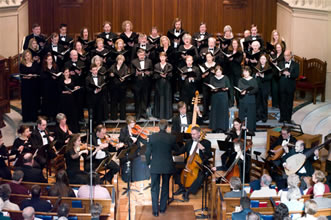For those not familiar with R.C. Sherriff’s 1928 World War I drama Journey’s End, the thought of a play about war being produced in Deep Dish Theater Company’s tiny auditorium and stage in Chapel Hill’s University Mall might seem a bit unwieldy and almost ludicrous. But, as contradictory as this might sound, what we have here is a war story without action: an examination of a group of British officers waiting for that action to occur. It is very, very British in character and tone — not that far removed from Brideshead Revisisted in the trenches.
The 1928 premiere in London, starring the young Laurence Olivier, was an enormous success despite concerns that the public would shun a play about “the war to end all wars” that ended merely ten years earlier. Over the next 80 years there have been numerous adaptations in many languages, revivals, films based on the play, awards, and even debates about the “message,” assuming that there is one. Not overtly anti-war nor a flag waving nationalistic call to arms, Journey’s End is as much a magnifier of banality, boredom, and bravery as it is a study of the psychology of men under stress – done in a marvelously wry, understated British manner.
There is one magnificent set, designed by Michael Allen, that is the centerpiece of both acts of this lengthy play (two hours, 45 minutes running time). In fact, I would go so far as to say that it is almost too extravagant and cushy considering the circumstances. Meant to represent the officers’ bunker just outside one of those infamous World War I trenches merely yards away from the German enemy, it gives more the appearance of a nicely paneled hunting lodge. There are three stage exits, all playing their own special role: stage right leads to the sleeping quarters for some of the officers, stage left is the kitchen, and rear center stage — and the focal point of much of the play — goes outside to the trenches and “no man’s land,” a small piece of real estate where bullets and bombs have no respect for an alleged neutral area. Lighting designer Doug Wood does a nice job of varying the look of what amounts to an entrance to hell.
The scene is set right away with two men at the center table, Captain Hardy (a brief role played by Jack Prather overdoing his British accent a bit) describing the situation to his replacement Lieutenant Osborne. Eric Carl was magnificent as this older (mid-40s?) officer and seemed to be in a class by himself, even with the all-around excellent acting. You could sense right away that this play would be quite talky, filled with a dry, wry, and subtle British wit and customs, and would be as far away as possible from an action-filled war spectacle as you can get.
We finally meet Stanhope (played by Gus Allen with a keen mimicry of hundreds of clichéd British officer roles), the new battalion commander who is only in his early twenties and well respected, but trails along a reputation of excessive drinking. He has a history, which takes a while to be revealed, with Raleigh, barely a child who is the newest officer. Max Bitar takes on this role and his babyface and “cheerio” attitude looked the part perfectly. A convincing British accent (of all kinds) are essential to all the roles and dialect coach Marc Williams did a splendid job with the cast. Bitar could have used some fine-tuning, as it seemed — to my ears — that he was primarily using a lisp as an accent. He also had a habit of often turning to the audience for each line he spoke rather than the person he was speaking to. Despite all this, the young Raleigh, after being briefed on his first real experience of war, uttered a ridiculously innocent and yet profound statement: “It all seems so silly.” This is about as anti-war as it gets. There are no powerful speeches or tirades, just a group of guys talking about trivial stuff and waiting. Like Tom Petty says, “The waiting is the hardest part.”
A very serious subject and conflict ensues between Stanhope and Hibbert (acted with well-controlled anxiety and nervousness by Brett Stafford), who, because of his claimed painful neuralgia, wants a medical leave to return home. A powerful and somewhat bewildering scene occurs between the two that has Stanhope doing a perplexing about-face regarding desertion and bravery.
The serious and depressing “action” is wonderfully broken up by a bit of comic relief with two superb characters and the actors portraying them. Mason (David Hudson), the cook and also foot soldier at the end, is wonderful as only he enters and exits stage left and has some very funny lines. Trotter (Carl Martin) is a portly self-deprecating officer who kids about his fatness and has other wonderfully ribald dialogue.
A questionable order from the high command takes up much of the latter part of the play, and despite much of it being somewhat predictable and formulaic, it is quite powerful and compelling. I also find it somewhat puzzling that nearly all of Journey’s End is told through officers and their expectations, fears and ethics. Were enlisted men, even in 1928, not considered worthy of their say?
It is 2015 and we’re all used to heightened and graphic realism in depictions of war, both real ones and on film. So it is extremely difficult for a “talky” story like this to have such a powerful effect and hold one’s interest for nearly three hours. Director Karen O’Brien accomplished this theatrical tightrope walk with remarkable steadiness and conviction. I was drawn in to all the subplots and characters and became emotionally attached to their outcomes. A superb acting ensemble and story awaits you.
Journey’s End continues through Saturday, March 21. For more details on this production, please view the sidebar.












